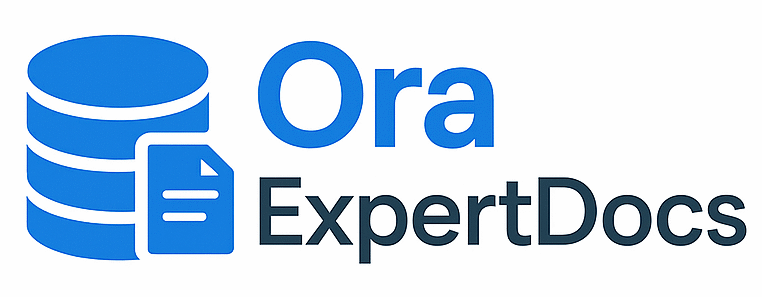Creating Implementation User using REST API We can use the REST API below for creating implementation users: REST API Endpoint: /hcmRestApi/scim/Users Method: POST Content-Type: application/json Payload: { “schemas”:[ “urn:scim:schemas:core:2.0:User” ], “userName”:”TEST_DUMMY_USER” }
How to Call Oracle Fusion BIP report from Oracle APEX
In this post, we will walk through the process to call Oracle Fusion BIP report from oracle APEX. Follow below steps to call Fusion BIP report from Oracle APEX. Step1 ===> Create Sample Fusion BIP report. Create sample BIP report in oracle fusion which we will use to call from oracle APEX as shown below: […]
ORDS Part-3: Enable ORDS for Custom Schema using PLSQL
In the Last post, we have seen how to download and install ORDS with XE database. In this post, we will see how to enable ORDS for schema. Step1: Create New User/New Custom schema. Login to XE database with SYS user. Check all pluggable databases. Show pdbs; Alter session to FREEPDB1: ALTER SESSION SET CONTAINER=FREEPDB1; […]
ORDS Part-1: Introduction to ORDS
Oracle REST Data Services (ORDS) is a middleware tool provided by Oracle that enables you to easily expose Oracle Database data and logic as RESTful web services. It’s a key component for modern application development, allowing seamless integration of database functionality with web, mobile, and cloud applications. ORDS (Oracle REST Data Services) is a Java-based […]
How to Restrict User for running ESS Job
In this section, we will see how to restrict ESS job to specific user. Let us create simple BIP report and ESS job based on BIP report. Follow steps mentioned in this below blog post to create Simple BIP report and ESS Job. Creating Simple BIP report in Oracle Cloud ERP Creating Custom ESS Jobs […]
How to Call BIP Report using SOAP Webservice in SOAP UI (ReportService WSDL)
In this section, we will see how to call BIP report using SOAP Webservice. Oracle provided a SOAP web service ReportService with “runReport” operation with which we can call BIP report and get output in Base64 format. We will call simple BIP report created in cloud application using SOAP Web service. Here we will use […]
Import Data Access for Users in Oracle Cloud ERP using ADFDI
In this section, we will check how to import and export data access for Users in bulk. We can import data access for users in bulk using ADFDI. Navigate to Setup and Maintenance —>Global Search—> Manage Data Access for users. Go to “Users with Data Access” as shown above. Provide Username and Role for which […]
Overview of Security Console in Oracle Fusion
Oracle Fusion Security Console: The Oracle Fusion Applications Security Console is an easy-to-use administrative work area where you perform most security-management tasks. This topic introduces the Security Console and describes how to access it Navigation to access Security Console is as below: Tools—> Security Console Click on Security Console Security Console consists of different […]
How to get UCM ID from document ID using Generic SOAP WSDL
We can get Document ID once we upload the files to UCM using Erpintegrations REST API as shown below: We can get UCM id from this document ID using generic SOAP WSDL with the details below: WSDL: Method: GenericSoapOperation Request: <soapenv:Envelope xmlns:soapenv=”http://schemas.xmlsoap.org/soap/envelope/” xmlns:ucm=”http://www.oracle.com/UCM”> <soapenv:Header/> <soapenv:Body> <ucm:GenericRequest webKey=”cs”> <ucm:Service IdcService=”GET_FILE”> <ucm:Document> <ucm:Field name=”dID”>2700074</ucm:Field> </ucm:Document> </ucm:Service> </ucm:GenericRequest> […]
Uploading File to UCM using ErpIntegrations REST API
Uploading File to UCM using ErpIntegrations REST API We can use the REST API for uploading files to UCM as below: REST API Endpoint: Method: POST Content-Type: application/json Payload: { “OperationName”:”uploadFileToUCM”, “DocumentContent”:”VGhpcyBpcyB0ZXN0IEZpbGUgZm9yIFVDTQ==”, “DocumentAccount”:”fin$/payables$/import$”, “ContentType”:”txt”, “FileName”:”TEST UCM Uplaod File.txt” } The payload details are as follows: OperationName This should be constant […]
